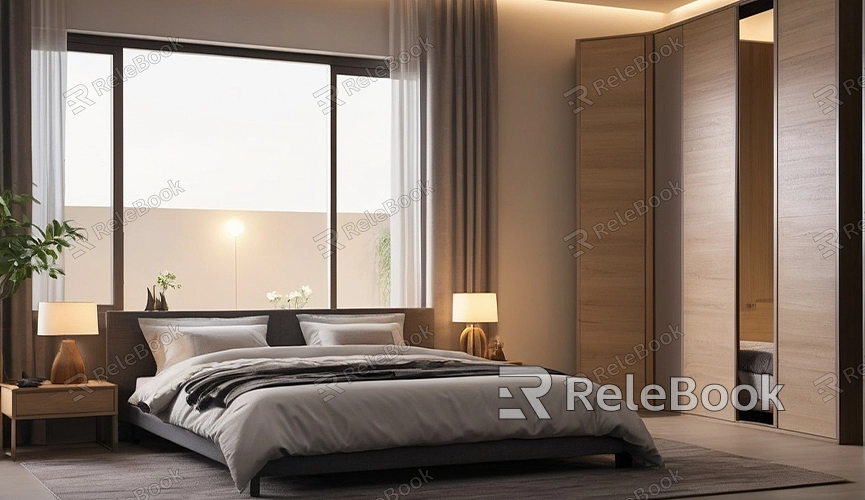3ds Max How to Texture a Wall
In 3D modeling and scene design, adding realistic textures to walls is a key step in creating a sense of realism. By using the right texture maps and adjustments, you can make walls appear more vivid and layered. In this article, we'll explain how to texture walls in 3ds Max, providing detailed steps and tips.
1. Prepare the Wall Model
First, make sure you have created the wall model and prepared UV mapping. In 3ds Max, you can use various modeling tools to create walls, such as box modeling, polygon modeling, etc. Ensure the wall's topology is sound and has enough subdivisions to support texture map detail.

2. Import Texture Maps
Before starting to texture, you need to prepare texture maps for the walls. You can use self-made texture maps or download them from online resource libraries or texture material websites. Relebook offers a wide range of high-quality 3D textures and models for download. Ensure the selected texture maps match the style and design requirements of the walls.
3. Create Materials
In 3ds Max, you can use the material editor to create and adjust materials. Open the material editor, create a new material, and import the texture maps into the material. Depending on your needs, you can adjust texture parameters such as color, transparency, reflectance, etc.
4. Apply Materials to the Wall
After setting up the materials, apply them to the wall model. In 3ds Max, you can do this by selecting the wall model and dragging the material onto the model to apply it. Ensure the material maps correctly onto the surface of the wall and that the texture map's proportions and orientation are correct.
5. Adjust Texture Parameters
Adjust texture parameters to achieve the desired effect based on practical needs and effect requirements. You can adjust parameters such as texture scale, rotation, offset, as well as material properties like reflection, glossiness, bump, etc., to make the walls look more realistic and natural.
6. Add Additional Details
In addition to basic textures, you can add extra details and effects to enhance the realism of the walls. For example, you can add textures for wall bumps, damages, and stains. These additional details can make the walls look more realistic and textured.
7. Render and Preview
After adding textures, render and preview the scene. In 3ds Max, you can use the built-in renderer to render the scene and preview the final effect. Make adjustments and corrections as needed until you achieve the desired result.
By following these steps, you can easily texture walls in 3ds Max to achieve vibrant and colorful effects. If you need high-quality 3D textures and HDRI or 3D model downloads while creating models and virtual scenes, you can download them from Relebook and directly import textures and 3D models into your project for use.

